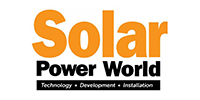
As energy storage plays an increasingly important role in the power sector’s transition to cleaner and more distributed resources, DOE wants to make sure the U.S. remains at the forefront of the technology.
“The Energy Storage Grand Challenge leverages the unique, extensive expertise and capabilities of the Department of Energy and our National Labs to really push the envelope when it comes to developing next-generation energy storage,” Energy Secretary Dan Brouillette said in a press release.
According to DOE, during Fiscal Years 2017-2019, it has invested over $1.2 billion in energy storage research and development, “establishing an agency-wide, long-term strategy.”
The House wants to accelerate such spending and on Monday the Appropriations Committee passed the Fiscal Year 2021 energy and water spending bill, which directs $1.3 billion for energy storage, including $500 million for “energy storage demonstration projects across a portfolio of technologies and approaches” and at least $770.5 million “for the manufacturing of advanced batteries and components.”
The focus of the Energy Storage Grand Challenge, DOE said, is “to create and sustain U.S. global leadership in energy storage utilization and exports, with a secure domestic manufacturing base and supply chain that is independent of foreign sources of critical materials.” All by 2030.
“The roadmap attempts to paint a comprehensive view of the energy storage landscape, opportunities, and challenges, and presents itself as taking an ecosystem approach, which RMI called for in last year’s Breakthrough Batteries report,” Rocky Mountain Institute Principal Charlie Bloch told Utility Dive via email, praising DOE’s overall effort.
“I appreciate that it does so with an eye toward being storage technology agnostic, as a key threat in the fast-moving space is that policies or regulations are drafted in such a way so as to lock-in Li-ion as the predominant technology when so many other options are still being explored and developed.” he continued.
“On the other hand, a key issue somewhat sidestepped by the roadmap is the fact that in order to develop a robust domestic market for innovation and manufacturing, the U.S. must also provide policy and regulatory demand-support signals … As written, the roadmap seems to strike more of a precautionary tone as it relates to policy, despite acknowledging the requirement for local demand,” he added.
read more











